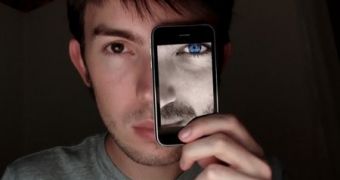As technology evolves, medical care becomes more and more digital, so two teams of researchers proved that the iPhone can be used to evaluate ophthalmic images and also that videoconferencing is a very good way of giving prompt eye management advice to rural emergency doctors.
Like most things, medicine and doctors rely on digital systems and mobile devices to direct work flow and improve communications.
For example, ophthalmologists make routine evaluations of images of patients' eyes, transmitted through internet, and establish a diagnosis and a treatment.
The images are usually viewed at computer workstations, on standard display screens, but researchers from the University of Pittsburgh School of Medicine wanted to know if hand-held devices like the iPhone could do the same job and have the same results.
So, ophthalmologists from the University of Pittsburgh Eye Center analyzed three characteristics of diabetic retinopathy, which is a potentially blinding disease affecting many diabetic people.
After assessing the three aspects with both the standard computer monitor and the iPhone images of 55 patients, the doctors then suggested a follow up treatment.
Dr. Michael J. Pokabla said that they “found high consistency–more than 85 percent agreement–between evaluations based on the standard computer monitor and on the iPhone for all image sections tested.
“There were no significant differences between evaluations and recommendations using the two systems, and the doctors rated the iPhone images as excellent.
“We conclude that mobile devices like the iPhone can be used to evaluate ophthalmic images,” he said.
But what do you do when there is no eye doctor nearby?
Some emergency rooms in medical centers in rural Australia have found the solution – videoconferencing!
There are many ERs that use videoconferencing to receive diagnosis and treatment advice for eye injuries and ophthalmic disease patients, because there is no other way of doing this.
The Royal Victorian Eye and Ear Hospital (RVEEH), which is a big metropolitan teaching hospital, is connected with four Ers that covers large regions in rural Australia.
The effectiveness of this method was analyzed by Dr. Christolyn Raj and her team, by evaluating the first six months of RVEEH video-conference interactions with the Ers.
Even though the average consultation lasted about 10 minutes, after video-conference consultations, there were nearly 60% of cases where diagnosis were altered, and in 70% of the cases, management plans were changed.
Dr Raj says that “videoconferencing is a sustainable, effective way of providing prompt eye management advice to rural emergency doctors.
“Although it can never replace face to face clinical care, it is a useful tool to have at one's fingertips and its use will undoubtedly increase in coming years.”

 14 DAY TRIAL //
14 DAY TRIAL //